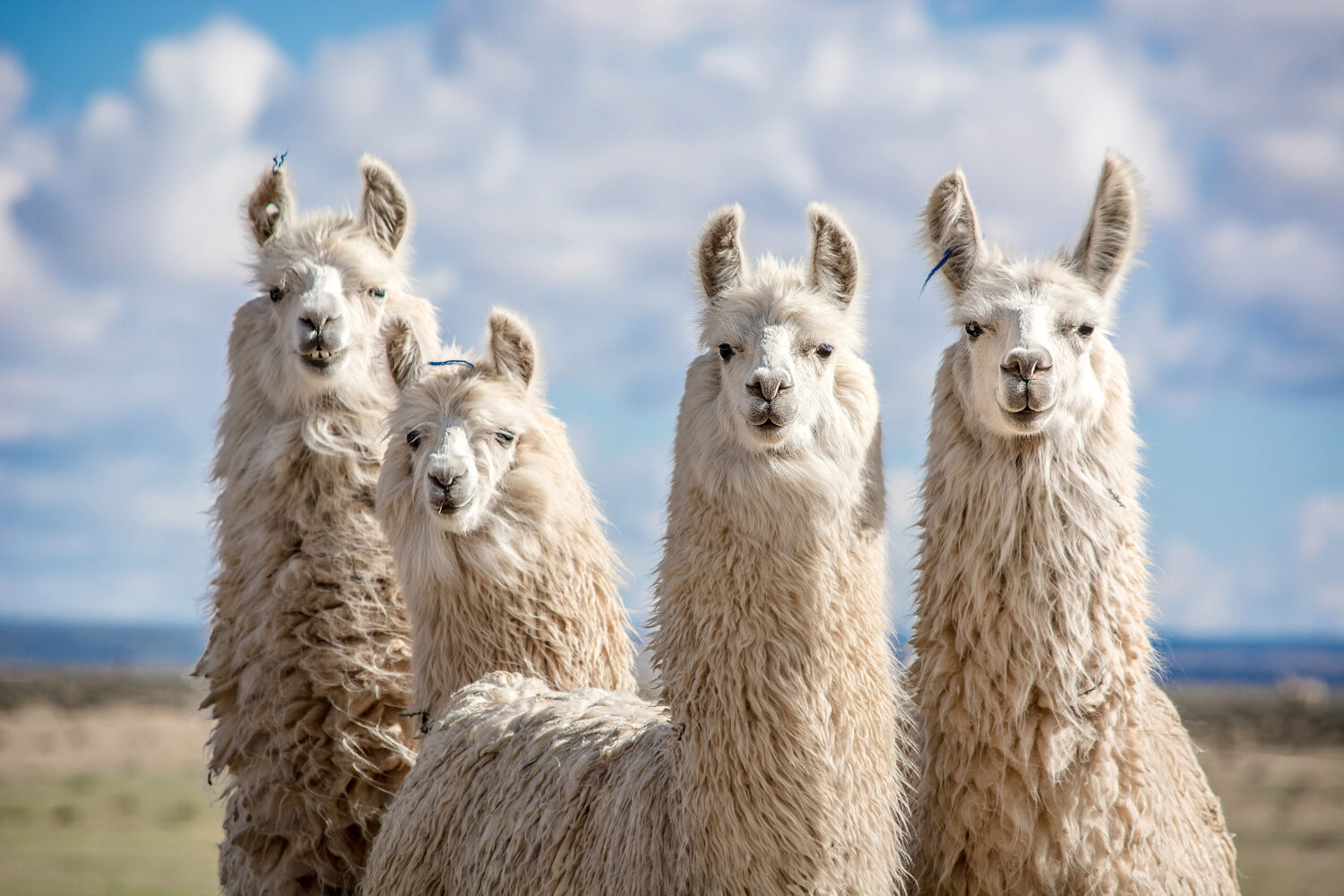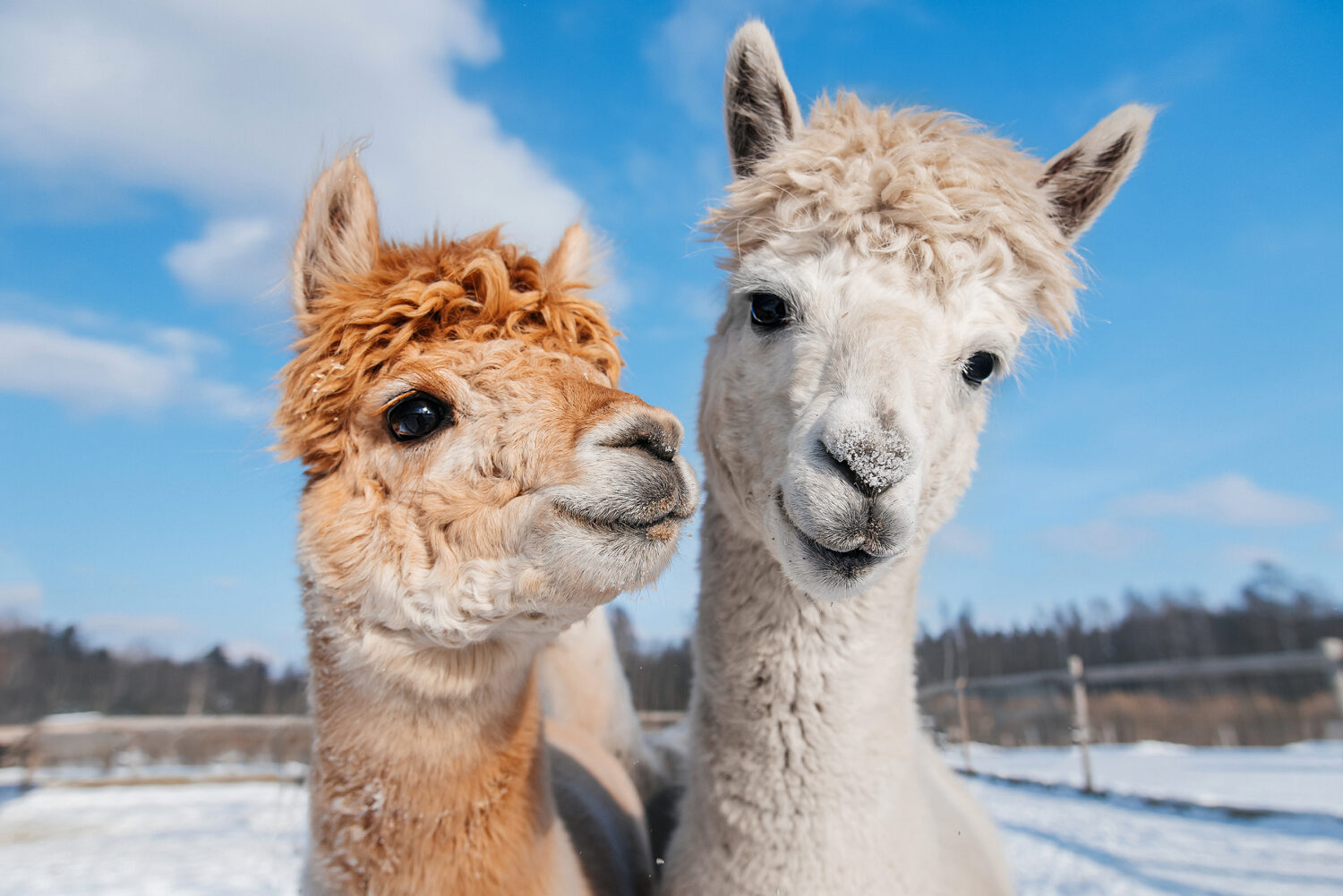Male vs Female Llamas: 6 Key Differences
Arguably one of the most interesting-looking animals in the world, llamas have been around for a long time. About 400 million years ago, they roamed the central plains of North America. Then, about 3 million years ago, they left the northern continent and migrated to South America.
Llamas are just one of the animals in the Camelidae family. Other camelids are camels — both bactrian and dromedary, alpacas, vicuñas, and guanacos. Llamas have been domesticated longer than any other species of animal other than, most likely, dogs.

©Daria_vg/Shutterstock.com
Used for the wool they produce, as pack animals, or to guard herds of sheep or goats, these animals are amazing and valuable. Adult llamas can produce 3 to 4 pounds of wool each year, and they’re dependable guard animals, too. Some people choose these animals as pets, even training them to be emotional support animals.
If you’re thinking about getting a llama as a pet, there are many factors to ponder. For instance, which would work better for your lifestyle — a male or a female llama? In this article, you can learn about the key differences between male versus female llamas.
Key Differences Between Male and Female Llamas

©Curioso.Photography/Shutterstock.com
The key differences between male and female llamas are their weight, height, reproductivity, temperaments, ease of handling and training, and sexual maturity.
Male and female llamas are similar in many ways. For instance, both genders come in four different wool categories — short wool, medium wool, long wool, and suri wool. Additionally, both males and females come in a variety of coat colors that include white, beige, cream, fawn, honey, roan, brown, red, gray, black, and any combination.
In contrast to their coat color and wool types, the two genders have some differences that are obvious and some that aren’t quite as visible. There are six key differences at which we will take a closer look.
Male vs. Female Llama: Weight

©Noe Besso/Shutterstock.com
According to the Canadian Llama and Alpaca Association’s breed standards, the average weight of an adult llama should be 250 to 555 pounds. However, males and females differ in exactly how much they weigh. A male typically weighs between 300 and 400 pounds but can weigh as much as 500 pounds or more. A female averages 230 to 350 pounds.
Llamas generally don’t reach physical maturity and their maximum weight until they’re about 4 years old. However, females mature earlier than males. Sometimes they’ll mature as much as 1 year earlier than their male counterparts. Both females and males are sturdily built and hardy animals, able to carry up to 200 pounds on their backs.
Male vs. Female Llama: Height

©Olena Lialina/iStock via Getty Images
Llamas look like they’re mostly neck. In fact, while they stand anywhere from 3 to 4 feet tall when measured at the shoulder, they are 5 to 6 feet tall when measured at the head. Clearly, the length of the neck adds over a foot in height.
Male llamas are typically taller than females. While they tend to stand closer to 4 feet at the shoulders and 6 feet at the head, the females are more often 3 feet when measured at the shoulders and 5 feet tall from their head down. Both sexes have that quintessential graceful, long-necked appearance.
Male vs. Female Llama: Reproductivity

©LABETAA Andre/Shutterstock.com
All camelids have 37 chromosomes, allowing them to cross-breed. Llamas, like all their camelid kin, mate in a sternal recumbent position called the kushed position. In this position, the female sits on her legs and has her belly on the ground. Though common in dogs and big cats, this position is unusual for larger animals.
While many animals copulate quickly, the llama couple takes 20 minutes to as much as 50 minutes to finish. While mating, the male vocalizes in a gurgling sound called orgling.
Unlike males of other species, llamas have a hard tip to their penis, made of cartilage. The penis penetrates right into the female’s uterus during mating. This can cause damage during the prolonged coitus of the pair if done repeatedly in a short period of time. In contrast to the male whose fertility isn’t affected by his anatomy nor the length of mating time, the female could become infertile if mating is done too often with no time for her to heal.
Male vs. Female Llama: Temperament

©jeanxfranco/Shutterstock.com
Having been domesticated for such a long period of time, llamas are gentle, curious, and friendly by nature. Interestingly, llamas that are bottle-fed as crias will become more difficult as they mature. If they’re over-socialized with humans and lack a llama buddy, they may even begin to treat people as though they’re herd members — spitting at them, kicking them, body charging, and even neck wrestling.
Female llamas are generally more gentle than males, though they, too, will sometimes pick fights with other llamas of lower social status. While the females will only spit to control other herd members, males will spit, body charge each other, neck wrestle, and kick.
A Specific Male Behavioral ProblemLlamas can develop a unique male behavior issue called Berserk Male Syndrome or Aberrant Behavior Syndrome (ABS). This is a psychological condition that occurs in males who have been raised with only humans because they can’t differentiate between people and llamas. In severe cases, llamas will spit at humans, bite them, charge and head butt them, and even lie on top of them.
There are a few reasons that ABS is typically a male condition. First of all, males get a surge of testosterone as they enter their breeding age, which is also when the condition usually emerges. Secondly, males are much more territorial than females. Finally, when young males are raised without another male llama, they don’t get to learn the scope and spectrum of acceptable herd behavior within the most crucial window of learning period in their lives.
Male vs. Female Llama: Ease of Handling and Training

©Wirestock/iStock via Getty Images
Llamas are naturally social animals. However, they tend to be aggressive toward smaller predators such as foxes and coyotes. Therefore, some people use these animals to guard their sheep or goat herds. In the case of guarding, males are typically the better choice since they’re larger and more territorial.
When it comes to handling and training them to be pets and companions, though, females tend to be the better choice. They don’t get testosterone surges like their male counterparts, giving them a more steady temperament throughout their lives. They are often more nurturing and attentive as well, especially if they’ve given birth before.
Though there are some differences between the male vs. female llama, both can be handled easily if they’re socialized with at least one other — preferably same-sex — llama. They are both fairly easy to keep happy and healthy and are generally low-key.
Male vs. Female Llama: Sexual Maturity

©Rita_Kochmarjova/Shutterstock.com
As with most species, males and females mature sexually at different rates. Specifically, females of most species tend to sexually mature faster than their male counterparts. In llamas, females reach puberty by around 12 months of age. Males, on the other hand, aren’t usually able to breed until after they’re 3 years old.
Reputable Llama breeders won’t breed females until they’re between 3 and 4 years old, which is when they’ve also reached physical maturity. Though males can be fertile as early as 7 to 9 months old, they don’t typically breed until they’re sexually mature and closer to physical maturity at 2 to 3 years of age.
Interestingly, almost all llama births happen in the daytime. Once the female goes into labor and the cria crowns, it usually takes anywhere from 10 to 45 minutes for it to be born. Mother llamas are attentive and loving. They “hum” to their babies and nurture them.
Interesting Llama Facts

©Cebas/iStock via Getty Images
- Male llamas develop fighting teeth between the ages of two and three, while females can develop them at four or five. There are typically three pairs in males, and they are used to bite other male llamas when fighting. These teeth need to be removed once they appear or filed down for safety reasons.
- Llamas have an average lifespan of 15 to 25 years. The oldest living llama in the world, Dalai Llama, died at the age of 27 years old on January 28, 2023.
- Female llamas experience induced ovulation, meaning they ovulate after mating rather than on a cyclical or spontaneous basis.
- A cria takes 11 1/2 months to gestate and weighs between 10 and 18 pounds. Immediately after birth, a cria can stand up and nurse from one of its mother’s four teats.
- They are pseudo-ruminants with three stomachs, compared to ruminants — cows, pigs, and goats — that have four stomachs.
- Llamas don’t have hooves. Instead, the bottoms of their feet are soft, with a leathery pad covering them. They have a hard toenail covering their two toes. Their sensitive feet provide them with sure-footedness, and they don’t cause as much damage to the environment. This is one of the adaptations that make them great pack animals.
- Llamas are very stoic animals. They don’t make a fuss when they’re sick, so owners need to be vigilant when it comes to ensuring they’re healthy.
- Though llamas can carry heavy loads for long periods of time, they are not built to carry people.









